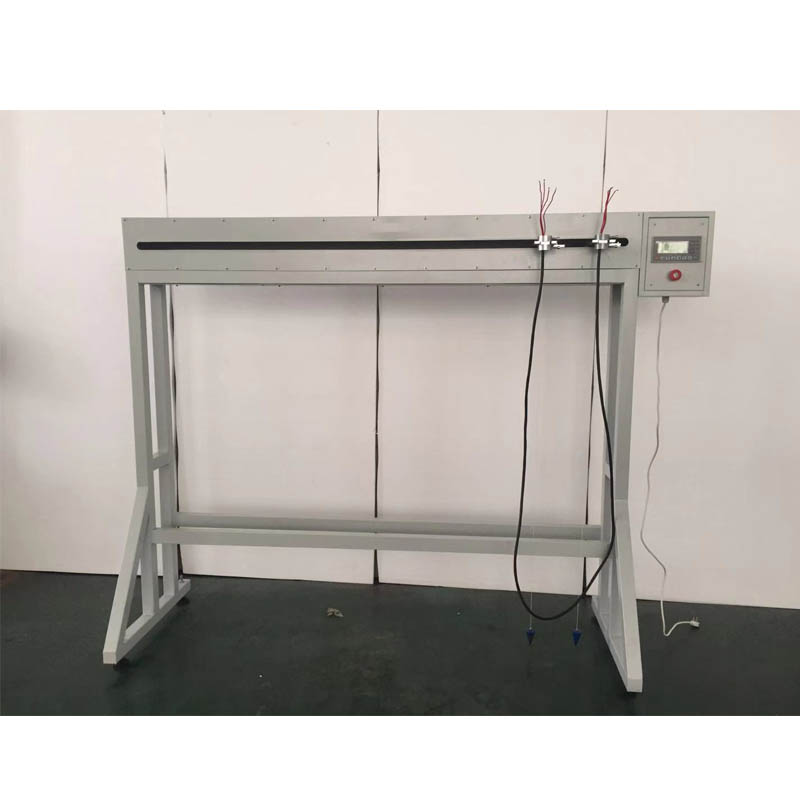Understanding Insulation Resistance Tests for Electrical Safety and Performance Optimization
Understanding Insulation Resistance Testers An Essential Tool for Electrical Safety
In the realm of electrical maintenance and troubleshooting, ensuring the integrity of insulation is crucial. One of the primary tools used to assess the quality of insulation in electrical installations is the insulation resistance tester. This instrument plays a vital role in identifying potential electrical hazards, ensuring safety, and maintaining operational efficiency in various environments. In this article, we will delve into the purpose, functionality, types, and significance of insulation resistance testers.
What is an Insulation Resistance Tester?
An insulation resistance tester, often referred to as a megohmmeter, is a specialized instrument designed to measure the resistance of electrical insulation. It gauges how well a given electrical component—such as cables, transformers, motors, and circuit breakers—insulates against the flow of electric current. By applying a high voltage (typically between 250V and 5000V) to the insulation, the tester evaluates how much current leaks through the material, thus providing a resistance measurement in megohms (MΩ).
Importance of Insulation Resistance Testing
1. Safety The foremost reason for conducting insulation resistance tests is to ensure safety. Faulty insulation can lead to electrical shock or fire hazards. Regular testing helps identify areas that may pose risks, allowing for timely repairs.
2. Preventive Maintenance Insulation resistance testers are invaluable for routine maintenance in settings such as manufacturing plants, commercial buildings, and residential complexes. By scheduling consistent tests, facility managers can detect deterioration early, preventing costly downtime or catastrophic failures.
3. Compliance with Standards Various electrical safety standards and regulations mandate regular insulation testing. Compliance not only ensures safety but also protects organizations from potential legal liabilities arising from electrical accidents.
4. Performance Evaluation Insulation testing provides insights into the performance of electrical systems. By tracking insulation resistance over time, one can assess the system’s health and predict its remaining lifespan.
How Insulation Resistance Testing Works
The operation of an insulation resistance tester is straightforward. Here’s a step-by-step overview
insulation resistance tester tester

1. Preparation Before testing, it’s essential to de-energize the equipment and isolate it from other electrical circuits. Safety precautions must be observed to prevent electric shocks.
2. Connection The tester is connected to the insulation to be tested. Typically, one lead is attached to the conductor (the wire or terminal), and the other lead is connected to ground or the metallic casing.
3. Testing The tester applies a specified high voltage across the insulation. The device measures the leakage current that flows through the insulation and calculates the resistance based on this current. This resistance value can be compared to industry standards or manufacturer recommendations to assess the condition of the insulation.
4. Interpretation of Results A high resistance value (generally above 1 MΩ) indicates good insulation, while lower values signal potential issues or degradation. It is essential to interpret these readings in context, considering factors such as temperature, humidity, and the age of the equipment.
Types of Insulation Resistance Testers
Insulation resistance testers come in various forms, catering to different applications and requirements
1. Analog Resistance Testers These traditional devices use a needle gauge to indicate resistance levels. They are simple and reliable but may require more interpretation. 2. Digital Resistance Testers Equipped with digital displays, these testers provide precise readings and often include additional features such as data logging and computation capabilities.
3. Automated Test Systems In more complex industrial settings, automated testers can perform insulation resistance tests as part of a larger monitoring system, providing real-time data and alerts.
4. Portable Handheld Testers These are lightweight and easy to use in the field, catering to electricians and maintenance personnel who require mobility.
Conclusion
Insulation resistance testers are indispensable tools in maintaining electrical safety and efficiency. By ensuring that insulation remains intact, these testers help protect lives and property from electrical hazards. Whether in industrial, commercial, or residential settings, regular testing is crucial for compliance, performance, and prevention. As technology advances, the capabilities of insulation resistance testers continue to evolve, further enhancing their effectiveness as a safeguard against electrical failures. Investing in quality insulation resistance testing not only fosters safety but also contributes to the longevity and reliability of electrical systems.
-
Why the Conductor Resistance Constant Temperature Measurement Machine Redefines Precision
NewsJun.20,2025
-
Reliable Testing Starts Here: Why the High Insulation Resistance Measuring Instrument Is a Must-Have
NewsJun.20,2025
-
Flexible Cable Flexing Test Equipment: The Precision Standard for Cable Durability and Performance Testing
NewsJun.20,2025
-
Digital Measurement Projector: Precision Visualization for Modern Manufacturing
NewsJun.20,2025
-
Computer Control Electronic Tensile Tester: Precision and Power for the Modern Metal Industry
NewsJun.20,2025
-
Cable Spark Tester: Your Ultimate Insulation Assurance for Wire and Cable Testing
NewsJun.20,2025
 Copyright © 2025 Hebei Fangyuan Instrument & Equipment Co.,Ltd. All Rights Reserved. Sitemap | Privacy Policy
Copyright © 2025 Hebei Fangyuan Instrument & Equipment Co.,Ltd. All Rights Reserved. Sitemap | Privacy Policy
